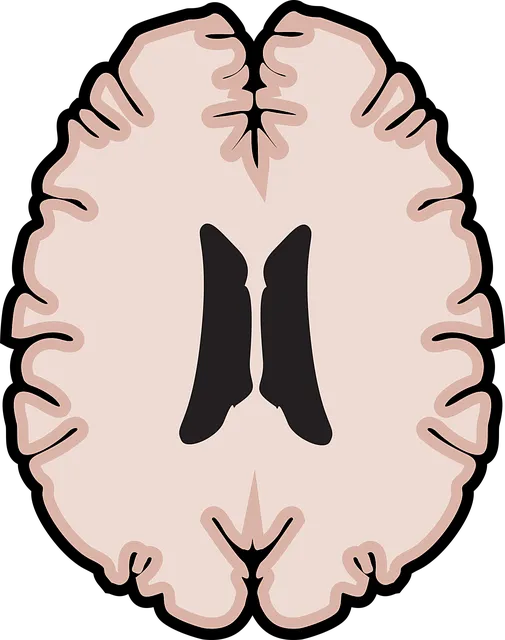Analyzing statistical data from Greenwood Village Kaiser Permanente mental health coverage is a powerful approach to enhancing overall well-being. By examining diagnosis rates, medication usage, and hospitalization trends, healthcare providers can identify challenges like anxiety disorders among young adults and implement evidence-based strategies such as Mind Over Matter Principles and tailored Community Outreach Programs. This data-driven method allows for proactive measures to address mental health issues before they escalate, guiding the development of targeted interventions and personalized treatment plans. Advanced analytics transform mental healthcare at Greenwood Village Kaiser Permanente, empowering professionals to create effective wellness coaching programs and inform policy advocacy on both institutional and national levels.
Mental health data analysis is a powerful tool for understanding complex patient populations. This article explores the critical components of mental health data, its unique considerations, and the significant role it plays in healthcare. We delve into how analysis can uncover trends and patterns, offering insights that enhance care delivery at organizations like Greenwood Village Kaiser Permanente. By examining real-world examples, we highlight the impact of data-driven decisions on improving mental health coverage and patient outcomes.
- Understanding Mental Health Data: A Comprehensive Overview
- The Role of Analysis in Uncovering Trends and Patterns
- Interpretation and Application: Improving Care at Greenwood Village Kaiser Permanente
Understanding Mental Health Data: A Comprehensive Overview

Understanding Mental Health Data is a critical step in addressing and improving overall well-being, especially within populations like those covered by Greenwood Village Kaiser Permanente mental health coverage. This data encompasses various aspects of mental health, from prevalence rates of specific disorders to trends in treatment-seeking behaviors and outcomes. By analyzing this information, healthcare providers, researchers, and policymakers can gain valuable insights into the scope of mental health challenges faced by communities.
The process involves examining statistical indicators such as diagnosis rates, medication usage, and hospitalization trends. For instance, understanding that anxiety disorders are prevalent among young adults within the Kaiser Permanente network can guide the implementation of Mind Over Matter Principles-based programs in schools and community outreach initiatives. Similarly, data on successful treatment interventions can inform best practices for improving mental health care delivery, leading to more effective support through Community Outreach Program Implementations tailored to diverse needs. Enhancing Mental Health Awareness is a direct outcome of this comprehensive data analysis, enabling proactive measures to address mental health issues before they escalate.
The Role of Analysis in Uncovering Trends and Patterns

The analysis of mental health data plays a pivotal role in uncovering trends and patterns within populations, which is particularly relevant for understanding the needs of members like those covered by Greenwood Village Kaiser Permanente mental health coverage. By delving into this data, healthcare providers can gain valuable insights into the prevalence of specific disorders, the effectiveness of treatments, and emerging issues within the community. This process involves complex statistical methods that identify correlations and outliers, revealing hidden connections between various factors such as demographics, lifestyle choices, and environmental influences.
For example, analyzing trends in mental health data might highlight an increase in anxiety disorders among younger adults or a correlation between poor self-care practices and higher stress levels. These findings can then guide the development of tailored interventions and programs. Promoting emotional intelligence and mindfulness through community workshops or integrating mind over matter principles into wellness plans could become targeted strategies, ensuring that services are not just reactive but proactive in addressing mental health concerns among the population served by Greenwood Village Kaiser Permanente, such as those with comprehensive mental health coverage.
Interpretation and Application: Improving Care at Greenwood Village Kaiser Permanente

At Greenwood Village Kaiser Permanente, the interpretation and application of mental health data analysis play a pivotal role in enhancing patient care. By leveraging comprehensive mental health coverage and advanced analytics tools, healthcare professionals can gain valuable insights into community trends, individual patient journeys, and risk factors associated with various mental health conditions. This enables them to tailor interventions more effectively, ensuring personalized treatment plans that address specific needs.
The integration of data-driven practices goes beyond improving care; it also supports the development of evidence-based mental wellness coaching programs. Mental health policy analysis and advocacy, powered by insightful data, can shape more effective strategies at both the institutional and national levels. Moreover, risk assessment techniques for mental health professionals become more precise, allowing for proactive management of patient risks and early intervention, ultimately contributing to improved outcomes and a stronger, more resilient community.
Mental health data analysis plays a pivotal role in identifying trends and patterns within populations, as demonstrated by its successful application at Greenwood Village Kaiser Permanente. By meticulously understanding and interpreting this data, healthcare providers like Greenwood Village can enhance their mental health coverage and care strategies. This evidence-based approach ensures that interventions are tailored to meet the unique needs of individuals, fostering better outcomes and overall well-being in communities served by Greenwood Village Kaiser Permanente.






